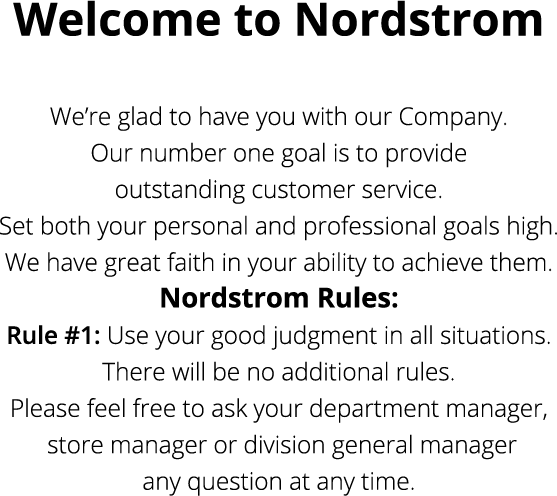Employee-Employer Relationship: Redefining Work Bonds
Nobody likes being treated like a number.
If the employee/employer relationship is purely transactional, employees will vote with their feet. And a competitor will happily snap them up before they’re half-way out your door.
- Employee turnover has increased by 88% since 2010 (WorkInstitute)
- More than 80% of turnover in 2018 was preventable (WorkInstitute)
- Talent shortages are a key concern for 63% of organisations (Gartner)
Such is the global talent war. It’s a candidates’ world out there – good people know they’re spoiled for choice. And guess who they won’t choose?
- You, if you’re offering a ho-hum employee experience.
- You, if you’re doing the bare minimum to tick the ’employee engagement’ box.
- You, if you think ’employee experience’ is a synonym for ‘short-term perks’.
But employee experience is old news, right?
You’ve been reading about this stuff for years, especially if you’re a regular Enboarder blog reader. And Deloitte say, 84% of executives believe employee experience matters.
But here’s the thing.
Most businesses still aren’t anywhere near where they need to be.
That’s why only 9% of organizations think they’re ready to address employee experience, the Deloitte 2019 Human Capital Trends Report says. The terms of the employee/employer relationship have fundamentally changed. And employers need to catch up if they want to keep up.
Here’s how to reposition your business to put employee experience first, plus some inspiration from companies who are already rocking it.

Focus on Employee Experience – Not Engagement
Jacob Morgan coins the idea of the employee experience advantage in his fantastic book of the same name (here), addressing the ‘experiential organization’ that sees employee experience as the major driver of commercial success.
He talks about the crucial distinction between employee experience and employee engagement, saying:
“The unintended consequence of employee engagement is that most people view it as just a perk. An adrenaline shot that boosts satisfaction temporarily.
The problem with that is, employees are no more loyal to the organization, they don’t bring any more of themselves and it doesn’t drive innovation. What’s far more effective is, changing core workplace practices around the organisation”.
The idea is, short-term perks are just that: short-term perks.
If you want a long-term, mutually fulfilling relationship with your employees (table stakes, because they won’t settle for anything less), you have to take a longer-term, holistic approach. You have to reframe the employee/employer relationship.
Jacob Morgan breaks employee experience into three buckets – culture, technology and physical space. In other words, how employees feel, the tools and technologies they use to work, and the space they work in.
You can boil those down to one fundamental bucket: how you make employees feel.
If you don’t empower employees with the right tools, they are likely to feel frustrated and believe you don’t support their growth. And if your workplace isn’t a safe, welcoming, friendly space, employees could feel excluded, isolated and/or anxious.
You don’t need ping-pong tables, indoor slides, on-site gyms, gaming areas or an aquarium to create a workplace your people love. You don’t need the latest and greatest tech. You can’t buy employees’ affection.
So let’s talk about what you can do, to start rewriting the employee/employer narrative, and become an employee experience-first business.

Photo by Lovefreund
How to Become an Employee Experience-First Business
You can’t cheat, shortcut or short-change this. Organization-wide change takes time.
Here are some practical steps to guide your progress:
- Start from the top. This is cultural change, so it needs to start from the top or you won’t have a hope in hell of rolling it through the business. Don’t run full steam ahead until you’ve got C-suite buy-in and an executive sponsor to help drive engagement.
- Define your DNA. Or find your why; define your purpose; etc. That’s why you’re starting at the top; this isn’t just HR’s job. Fundamental, existential discussion needs to happen. Employees won’t connect with your business unless they’re totally sure what you stand for and what’s expected from them.
For example…
Nordstrom are known worldwide for outstanding customer service. They’re the gold standard; the service business other service businesses want to be. That’s thanks to the autonomous, entrepreneurial employee experience written into their DNA.
Everyone working with Nordstrom has an absolutely clear understanding what being a Nordstrom employee means.
The Nordstrom Way involves hiring self-motivated, entrepreneurial people and giving them total, no-holds-barred authority to do whatever they think is best to deliver exceptional service. Nordstrom ask their people to make decisions as if they were in business for themselves. They’re all about empowering employees to use their initiative in pursuit of one goal: profoundly happy customers.

- Run gap analysis. Work out where your biggest employee experience improvement opportunities are. Don’t just run surveys – talk to employees (happy and unhappy). And if they’ll talk to you, talk to employees’ who’ve left. Engage profoundly to understand your weak points, as well as your strong points.
- Build a taskforce. Employee experience isn’t an HR initiative; it’s an everyone initiative. Build a dedicated taskforce involving a diverse cross-section of people from different departments and levels. Make sure it’s non-hierarchical and offers immunity – so everyone has a voice and constructive criticism is always heard. Good ideas can come from anywhere.
- Create moments that matter. Your taskforce should focus on defining the moments that matter most for employees, then delivering empathetic experiences around those moments. Work moment-by-moment: bitesize changes soon add up. And don’t be afraid to be creative.

For example…
One of our fabulous customers, oOh!Media, lives and breathes this approach. Their ethos – which stems from their early days as a small family business – is to always treat individuals as individuals, creating moments that matter on a case-by-case, employee-by-employee basis.
Like…
They once had three members of the same family working for them. When one became quite sick, they ensured all three could take as much time off as they needed, while still being paid their full wages.
Or…
Rather than giving a top-performing employee a bonus as a reward, they used the money to book the shark diving experience that they knew had been on her bucket-list since forever.
That’s how discrete moments become a fantastic experience-first culture that creates extreme loyalty.
- Increase tactical investment.
Come back to your gap analysis to understand your highest-impact areas for investment.Maybe that means increasing HR headcount so you can give employees more one-to-one support, for example. Maybe that’s creating an experience fund to fuel a new rewards program. Maybe it’s setting budget to hire holiday-cover temps to relieve pressure from teams and promote real time away. Maybe it’s investing into experience-driven onboarding tech (*wink*). - Trial and question; don’t set and forget.
Employee experience will never be something you have done. It’s always something you’re doing.Identify small projects and trial them – then proactively seek feedback and grow. The better you harness employee data, the easier you’ll find the process. - Refine recruitment criteria.
Crap managers create crap experiences. To drive an experience-first business, only hire people who align with that vision. Train your recruiters so everyone knows how to spot culture-aligned people. It’s easy to be blinded by less important but snazzier skills, but experience-first means prioritising people who’ll be part of everyone else’s great experience. That might mean interviewing first, creating best-fit roles later. - Upskill the workforce to deliver better experiences.
Part of becoming an experience-first business is training the people in your business to deliver great experiences to one other and to customers. Get employees on-side, teach them what ‘great’ looks like, and which steps to take to get there. Celebrate wins. Make delivering great experiences a central tenet of your business.
For example…
In 2018, privately-owned supermarket chain Wegmans topped the charts for Americans’ favourite grocery chains for the third year running. And apparently, they get thousands of calls each year begging them to open new stores. That takes quite some doing, for a grocery chain.
Not-so-coincidentally, they’re also renowned for their treatment of employees.
Next-level training sees employees travel around the world to learn about products, for example. All cashiers have a minimum of 40-hours of training before they interact with customers, and Wegmans regularly invest millions in college scholarships for employees.
The result is dramatic cult-like loyalty from employees, sure. Wegmans enjoys half the turnover of its competitors. But it’s also dramatic cult-like loyalty from customers, who can’t get enough of the customer experience you get when every employee is trained and passionate about their role.

The Upshot
Becoming an EX-first business won’t happen overnight. But it won’t happen at all if you’re focused on short-term perks over ingrained cultural change.
Focus instead on reframing the employee/employer relationship for good, recognising that employees are customers and employee experience is customer experience.
Because it’s not easy. But when you get it right, there’s explosive ROI on the table.
Enboarder is the world’s first experience-driven onboarding platform, helping you put your employees first, to put your customers first. Here’s how it works.